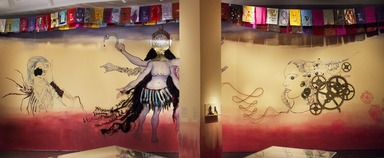

Chitra Ganesh: Eyes of Time, December 12, 2014 through July 12, 2015 (Image: DIG_E_2014_Chitra_Ganesh_Eyes_of_Time_01_PS8.jpg Brooklyn Museum photograph, 2014)
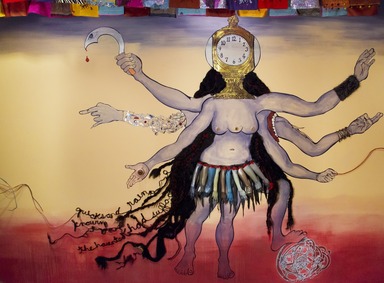
Chitra Ganesh: Eyes of Time, December 12, 2014 through July 12, 2015 (Image: DIG_E_2014_Chitra_Ganesh_Eyes_of_Time_02_PS8.jpg Brooklyn Museum photograph, 2014)
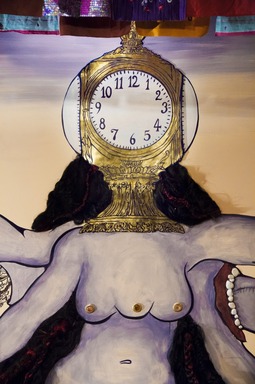
Chitra Ganesh: Eyes of Time, December 12, 2014 through July 12, 2015 (Image: DIG_E_2014_Chitra_Ganesh_Eyes_of_Time_03_PS8.jpg Brooklyn Museum photograph, 2014)
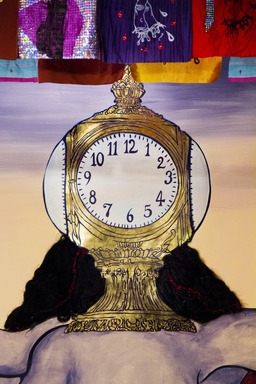
Chitra Ganesh: Eyes of Time, December 12, 2014 through July 12, 2015 (Image: DIG_E_2014_Chitra_Ganesh_Eyes_of_Time_04_PS8.jpg Brooklyn Museum photograph, 2014)
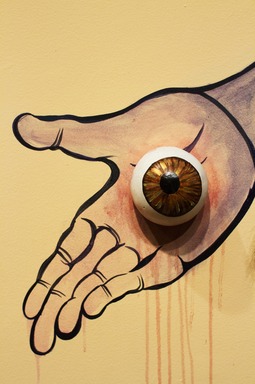
Chitra Ganesh: Eyes of Time, December 12, 2014 through July 12, 2015 (Image: DIG_E_2014_Chitra_Ganesh_Eyes_of_Time_05_PS8.jpg Brooklyn Museum photograph, 2014)

Chitra Ganesh: Eyes of Time, December 12, 2014 through July 12, 2015 (Image: DIG_E_2014_Chitra_Ganesh_Eyes_of_Time_06_PS8.jpg Brooklyn Museum photograph, 2014)
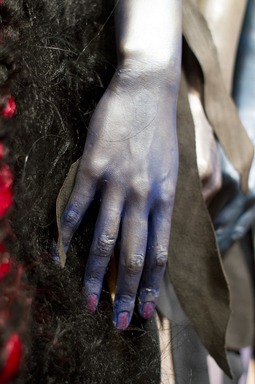
Chitra Ganesh: Eyes of Time, December 12, 2014 through July 12, 2015 (Image: DIG_E_2014_Chitra_Ganesh_Eyes_of_Time_07_PS8.jpg Brooklyn Museum photograph, 2014)

Chitra Ganesh: Eyes of Time, December 12, 2014 through July 12, 2015 (Image: DIG_E_2014_Chitra_Ganesh_Eyes_of_Time_08_PS8.jpg Brooklyn Museum photograph, 2015)
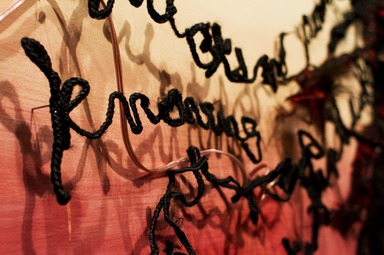
Chitra Ganesh: Eyes of Time, December 12, 2014 through July 12, 2015 (Image: DIG_E_2014_Chitra_Ganesh_Eyes_of_Time_09_PS8.jpg Brooklyn Museum photograph, 2014)
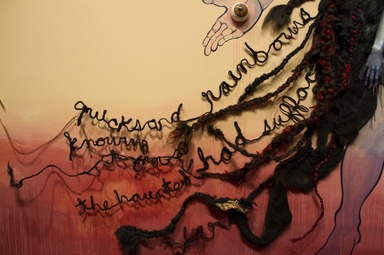
Chitra Ganesh: Eyes of Time, December 12, 2014 through July 12, 2015 (Image: DIG_E_2014_Chitra_Ganesh_Eyes_of_Time_10_PS8.jpg Brooklyn Museum photograph, 2014)
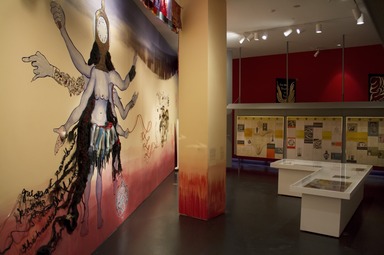
Chitra Ganesh: Eyes of Time, December 12, 2014 through July 12, 2015 (Image: DIG_E_2014_Chitra_Ganesh_Eyes_of_Time_11_PS8.jpg Brooklyn Museum photograph, 2014)
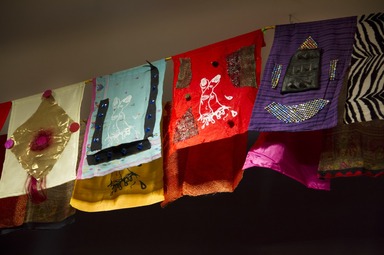
Chitra Ganesh: Eyes of Time, December 12, 2014 through July 12, 2015 (Image: DIG_E_2014_Chitra_Ganesh_Eyes_of_Time_12_PS8.jpg Brooklyn Museum photograph, 2014)
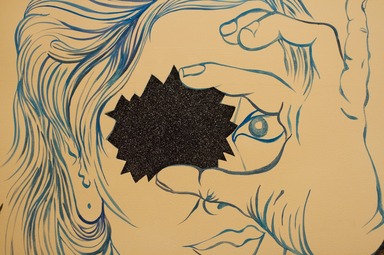
Chitra Ganesh: Eyes of Time, December 12, 2014 through July 12, 2015 (Image: DIG_E_2014_Chitra_Ganesh_Eyes_of_Time_13_PS8.jpg Brooklyn Museum photograph, 2014)
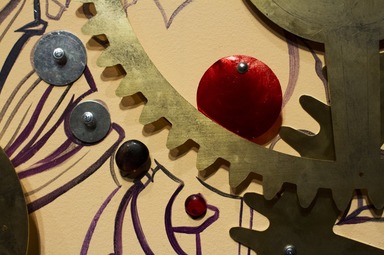
Chitra Ganesh: Eyes of Time, December 12, 2014 through July 12, 2015 (Image: DIG_E_2014_Chitra_Ganesh_Eyes_of_Time_14_PS8.jpg Brooklyn Museum photograph, 2014)

Chitra Ganesh: Eyes of Time, December 12, 2014 through July 12, 2015 (Image: DIG_E_2014_Chitra_Ganesh_Eyes_of_Time_15_PS8.jpg Brooklyn Museum photograph, 2014)

Chitra Ganesh: Eyes of Time, December 12, 2014 through July 12, 2015 (Image: DIG_E_2014_Chitra_Ganesh_Eyes_of_Time_16_CG_edit_PS8.jpg Brooklyn Museum photograph, 2014)

Chitra Ganesh: Eyes of Time, December 12, 2014 through July 12, 2015 (Image: DIG_E_2014_Chitra_Ganesh_Eyes_of_Time_17_CG_edit_PS8.jpg Brooklyn Museum photograph, 2014)
Chitra Ganesh: Eyes of Time
-
Chitra Ganesh: Eyes of Time
For more than decade, Brooklyn-based artist Chitra Ganesh (American, born 1975) has mined the iconography of mythology, literature, and popular culture to bring to light feminist and queer narratives. Employing a variety of media —including charcoal drawings, digital collages, films, web projects, photographs, and wall murals—Ganesh's evocative and surreal juxtapositions rework shared cultural fantasies to allow for new readings of the past and alternate visions of the future.
Ganesh's installation Eyes of Time draws on the Brooklyn Museum's encyclopedic collection to explore ideas of femininity, empowerment, and multiplicity. Taking the South Asian goddess Kali as a starting point, Ganesh considers the representation of femininity as a complex and layered cultural construct. Her mural and the objects paired with it suggest resonances between a variety of goddess incarnations, the female icons (including Kali) honored in Judy Chicago's The Dinner Party, and contemporary understandings of gender and identity as fluid formations that change over time.
The artist-curated vitrines at the center of the gallery feature works from our Egyptian, Asian, American, and Contemporary collections that expand on these ideas. Bringing attention to Kali as just one of many avatars of the Great Goddess Devi, Ganesh has an eclectic array of repeating, regenerating, and hybrid female figures and offered her own commentary in the object labels. Also in the collection and on view here is one of the artist's first major works, Tales of Amnesia (2002), a zine that remixes well-known Indian comic books from a queer feminist perspective. This work, the artist's presentation of historical and contemporary objects, and the site-specific mural all highlight various ways that Ganesh's practice unravels expectations in order to weave new stories.
Saisha Grayson
Assistant Curator, Elizabeth A. Sackler Center for Feminist Art
-
KALI
In Hinduism, the Great Goddess Devi takes many forms, with individually named avatars that proliferate and transform within devotional texts and practices. Kali is widely worshipped as one of these incarnations, along with other closely related goddesses such as Durga and Matangi, who are depicted in the traditional Indian painting in the nearby case. This array of coexisting characteristics and narratives offers a layered vision of female divinity, or shakti, that resists simplification or reduction.
As the goddess of destruction and rebirth, Kali is closely associated with time and the inevitable changes it brings. Her adornments of skulls and arms, wild hair, bloodshot eyes, and black or blue skin have long defied typical portrayals of ideal femininity. Yet, her fearsome physical attributes belie her beloved status as both a destroyer of evil and a regenerative figure that allows life to spring from death.
Ganesh’s work also draws inspiration from the migration of Kali and her forms to Buddhist iconography such as Tibetan devotional paintings, or thangkas, and Indonesian goddess imagery.
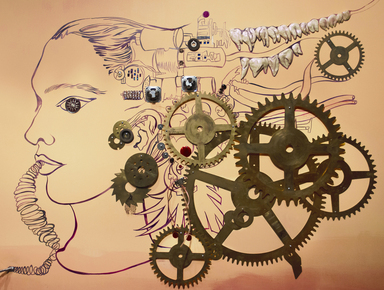
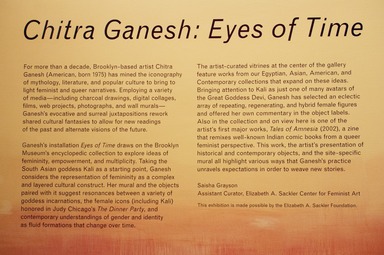


![[Untitled]](https://d1lfxha3ugu3d4.cloudfront.net/images/opencollection/objects/size0/1999.17.3_PS20.jpg)



